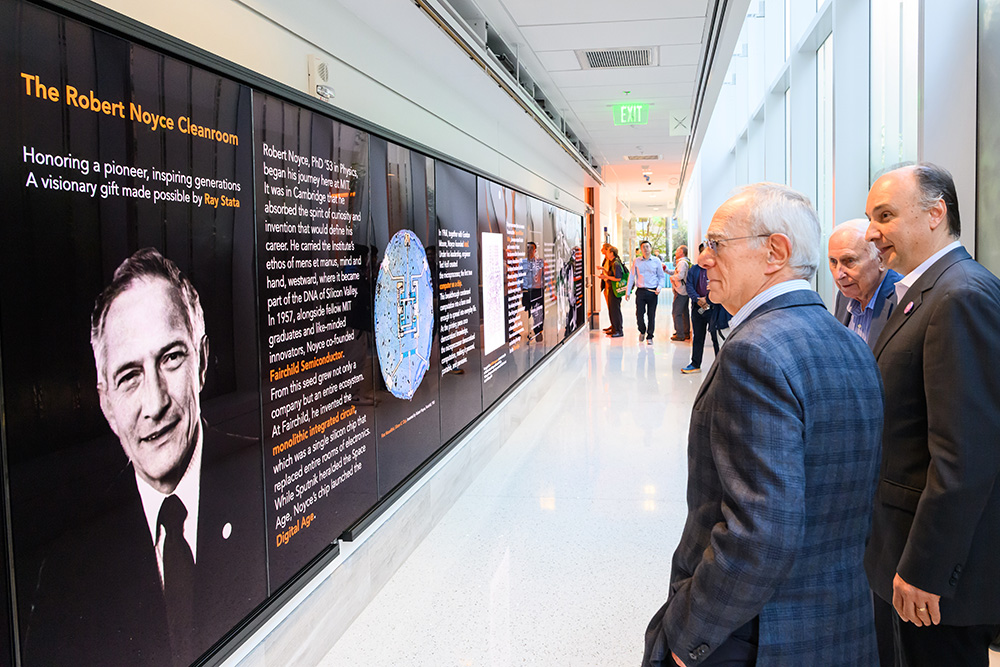
Nikon Z9 Camera
“MIT.nano is essential to making progress in high-priority areas where I believe that MIT has a responsibility to lead,” declared MIT President Sally Kornbluth at the 2025 Nano Summit. The event, held at the Massachusetts Institute of Technology, focused on the transformative potential of nanoscience and nanotechnology across MIT’s strategic initiatives. These initiatives are critical to addressing some of the world’s most pressing challenges, including health, manufacturing, and climate change.
Throughout the daylong summit, discussions underscored the importance of interdisciplinary collaboration, the scalability of solutions from lab to market, and the use of nanoscale science to drive significant change. “MIT.nano has truly set itself apart, in the Institute’s signature way, with an emphasis on cross-disciplinary collaboration and open access,” Kornbluth noted. “Today, you’re going to hear about the transformative impact of nanoscience and nanotechnology, and how working with the very small can help us do big things for the world together.”
Advancing Health Through Nanotechnology
Angela Koehler, faculty director of the MIT Health and Life Sciences Collaborative (MIT HEALS), opened the first session with a compelling question: How can we build a community across campus to tackle transformative problems in human health? Three speakers responded by sharing their groundbreaking work in medicine.
Ana Jaklenec, a principal research scientist at the Koch Institute for Integrative Cancer Research, discussed her team’s development of single-injection vaccines. By borrowing techniques from electrical engineering, they created tiny devices capable of packaging multiple vaccine components. “MIT.nano was instrumental in helping us develop this technology,” Jaklenec stated. “We took something that you can do in microelectronics and the semiconductor industry and brought it to the pharmaceutical industry.”
Meanwhile, Giovanni Traverso, a gastroenterologist and the Karl Van Tassel Career Development Professor of Mechanical Engineering, found inspiration in nature. He studied cephalopods and remora fish to design ingestible drug delivery systems. Representing the industry perspective, Mirai Bio’s senior vice president Jagesh Shah emphasized the importance of collaboration between academia and industry to make meaningful impacts in health sciences.
Revolutionizing Manufacturing
The second session highlighted MIT’s Initiative for New Manufacturing (MIT INM), emphasizing the importance of preparing future generations for the manufacturing sector. “MIT’s dedication to manufacturing is not only about technology research and education, it’s also about understanding the landscape of manufacturing, domestically and globally,” said A. John Hart, co-director of MIT INM.
Dan Oran, an MIT alumnus and founder of Irradiant Technologies, shared his journey from a technician to a company founder. “How are companies like Dan’s making the move from the lab to prototype to pilot production to commercialization?” asked Elisabeth Reynolds, a professor of urban studies and planning at MIT. She highlighted the challenges of scaling innovations and the need for workforce development.
John Liu, a principal research scientist in mechanical engineering at MIT, proposed the creation of a new worker type in advanced manufacturing—the technologist. This role would bridge the gap between technicians and engineers, ensuring a seamless flow of new ideas from the classroom to the factory floor.
Addressing Climate Change with Nanoscience
Benedetto Marelli, mission director for the MIT Climate Project, emphasized the need for interdisciplinary collaboration to combat climate change. “If we’re going to have a tangible impact on the trajectory of climate change in the next 10 years, we cannot do it alone,” Marelli said.
Faculty speakers presented nanoscale solutions for climate resiliency. Michael Strano discussed his group’s work on using nanoparticles to convert waste methane and urea into renewable materials. Desirée Plata focused on scaling carbon dioxide removal systems, while Kripa Varanasi highlighted improvements in agricultural spraying to reduce pollution and costs.
In all presentations, the connection between climate and the economy was clear. “The economic systems that we have today are depleting to our resources, inherently polluting,” Plata emphasized. “The goal here is to use sustainable design to transition the global economy.”
The Role of MIT.nano
MIT.nano plays a crucial role in providing shared access facilities where researchers can design innovative solutions to global challenges. “What do people do at MIT.nano?” asked Jorg Scholvin, associate director for Fab.nano. The answer is vast, with 1,500 individuals and over 20 percent of MIT faculty labs utilizing MIT.nano’s resources. From 3D transistors to solar solutions, their work reflects the summit’s themes of developing scalable technologies and uniting disciplines to tackle complex problems.
President Kornbluth’s opening remarks and the faculty’s enthusiasm throughout the day highlighted the excitement and curiosity that drive MIT’s innovative culture. “The solutions to the problems we heard about today may come from inventions that don’t exist yet,” said Strano. “These are some of the most creative people, here at MIT. I think we inspire each other.”
Honoring a Legacy in Nanotechnology
The summit concluded with a tribute to the pioneers of nanoscience and nanotechnology. President Emeritus L. Rafael Reif announced the dedication of the MIT.nano cleanroom complex, named the Robert N. Noyce (1953) Cleanroom, made possible by a gift from Ray Stata. “Ray Stata was – and is – the driving force behind nanoscale research at MIT,” Reif said.
Stata co-founded Analog Devices, and Noyce, known as the “Mayor of Silicon Valley,” co-founded Fairchild Semiconductor and later Intel. “Noyce was a pioneer of the semiconductor industry,” Stata remarked. “It is an honor to be able to name the MIT.nano cleanroom after Bob Noyce, creating a permanent tribute to his vision and accomplishments in the heart of the MIT campus.”
Reif concluded by highlighting the legacy of MIT’s contributions to the semiconductor space and the future potential of the Robert Noyce Cleanroom. “Now, with the Robert Noyce Cleanroom, this amazing MIT community is ready to continue to shape the future with the next generation of nano discoveries – and the next generation of nano leaders, who will become living legends in their own time.”







